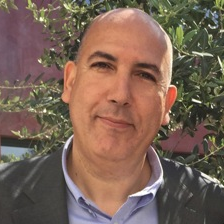Green Extraction of Natural Product: Innovative Techniques, Alternative Solvents and Original Procedures
A special issue of Molecules (ISSN 1420-3049). This special issue belongs to the section "Natural Products Chemistry".
Deadline for manuscript submissions: closed (31 October 2017) | Viewed by 102306
Special Issue Editors
Interests: green extraction; alternative solvents; innovative technologies; original procedures; microwave; ultrasound; intensification
Special Issues, Collections and Topics in MDPI journals
Interests: enabling technologies ind food extraction and processing; microwaves; ultrasound; hydrodinamic cavitation; SC-CO2; green solvents; bioactive natural products
Special Issues, Collections and Topics in MDPI journals
Interests: metabolomics; phytochemistry; supercritical fluid extraction; natural deep eutectic solvents
Special Issues, Collections and Topics in MDPI journals
Special Issue Information
Dear Colleagues,
The industrial production of perfumes, cosmetics, pharmaceuticals, food ingredients and products, nutraceuticals, biofuel, or fine chemicals, involve extraction processes. In the field of extraction of natural products, conventional methods, mostly using organic solvents have major drawbacks, such as insufficient recovery of extracts, long extraction time, high amounts of by-products and wastes, and high energy consumption. In recent years, the trend of extraction has moved to "sustainability", making a transition to "Green Extraction", to develop more "sustainable" processes using alternative solvents, less energy, and reducing waste, while ensuring the quality of final products.
The present Special Issue, “Green Extraction of Natural Product”, aims to collect and to publish recent advances in this interdisciplinary area. Reviews and research articles dealing with innovative techniques, alternative solvents, original procedures, comprehension of intensification mechanisms, by products valorization, and the green impacts and sustainable footprints. In term of dissemination this Special Issue is aiming to provide some guidelines for good practice and reporting, existing and in conception of reactors or solvents suitable for green extraction. Experts are welcome to give their opinion about how green extraction contributed/contributes/will contribute to natural products area, possible trends, and perspectives.
Prof. Dr. Farid Chemat
Prof. Dr. Giancarlo Cravotto
Prof. Dr. Young Hae Choi
Guest Editors
Manuscript Submission Information
Manuscripts should be submitted online at www.mdpi.com by registering and logging in to this website. Once you are registered, click here to go to the submission form. Manuscripts can be submitted until the deadline. All submissions that pass pre-check are peer-reviewed. Accepted papers will be published continuously in the journal (as soon as accepted) and will be listed together on the special issue website. Research articles, review articles as well as short communications are invited. For planned papers, a title and short abstract (about 100 words) can be sent to the Editorial Office for announcement on this website.
Submitted manuscripts should not have been published previously, nor be under consideration for publication elsewhere (except conference proceedings papers). All manuscripts are thoroughly refereed through a single-blind peer-review process. A guide for authors and other relevant information for submission of manuscripts is available on the Instructions for Authors page. Molecules is an international peer-reviewed open access semimonthly journal published by MDPI.
Please visit the Instructions for Authors page before submitting a manuscript. The Article Processing Charge (APC) for publication in this open access journal is 2700 CHF (Swiss Francs). Submitted papers should be well formatted and use good English. Authors may use MDPI's English editing service prior to publication or during author revisions.
Keywords
- green extraction
- separation and purification
- intensification
- enabling technologies
- deep eutectic solvents
- natural products
- supercritical fluids








